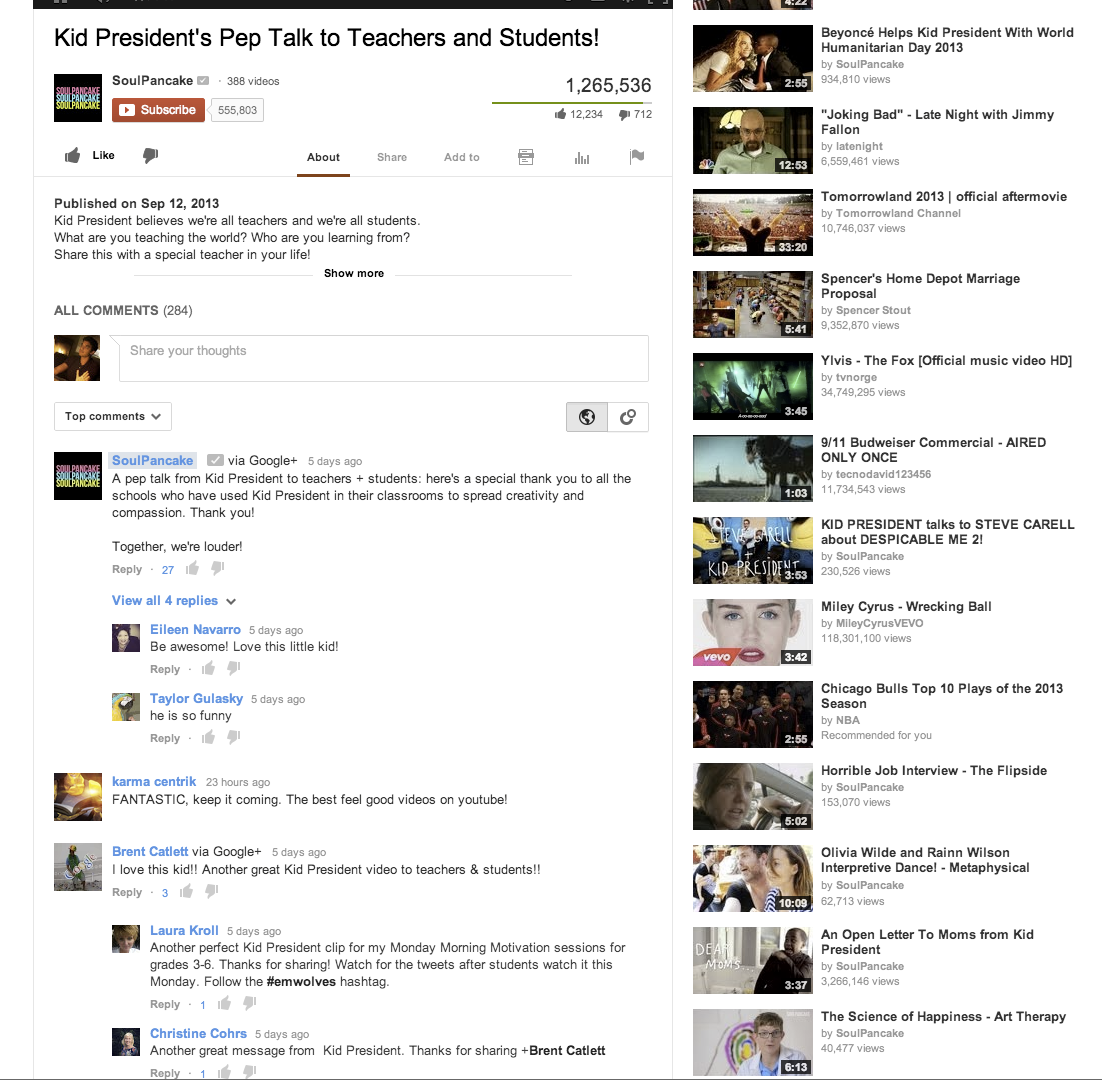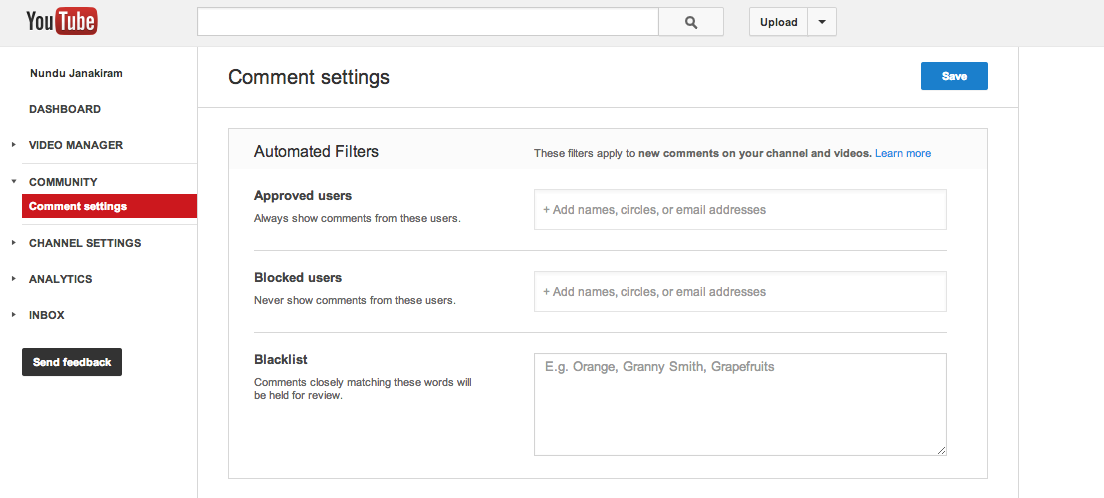
YouTube today announced a new commenting system that will be powered by Google+. The system, which is launching on channel discussion tabs this week before rolling out to all videos over the next few weeks and months, will automatically rank comments and feature threaded and private conversations.
Right now, YouTube comments are a hotbed for spam and idiocy, something Google is painfully aware of. The new system aims to fix this by personalizing and ranking comments for each individual user.
Last year, YouTube started asking its users to connect their YouTube and Google+ accounts so more users would use their real names on the site. Today’s integration goes quite a bit deeper. The new system will switch away from the current, recency-based system and instead rank comments according to a wide range of factors.
As Nundu Janakiram, a YouTube product manager who worked on this project, told me earlier this week, comments from the video creator will be ranked very highly and surfaced more regularly, for example. The system will also push comments from popular personalities on YouTube and people in your Google+ circles higher up the comment chain, as well as highly engaged discussion about the video. Just like before, you will be able to vote comments up or down, too, and those votes will also influence the ranking.
Users who want to go back to the old experience can always switch back to the recency-based view (though unless you are a troll, I’m not sure why you would want to do that). The new system also allows you to just see comments from people in your Google+ circle.
As Janakiram told me, the team realized that the current system is flawed. At the same time, though, YouTube also realized that the comments are a vibrant part of the YouTube experience. Despite its flaws, the team remained positive about the general concept of comments – just not in its current form.
As part of the Google+ integration, YouTube will now also aggregate public comments about a video from Google+ and display them on YouTube. Private messages, of course, will remain private. Thanks to the Google+ integration, users on YouTube itself will now also be able to have private conversations on the site by leaving comments that can only be seen by people in their Google+ circles or individual users.
Once YouTube switches to the new system, all of the old comments will still be in the system and intermixed with the new ranked and threaded comments.
Given that the new system further integrated Google+, users are almost obliged to disclose their real identities when they comment, which should lift the quality of the discussion on YouTube. It’s worth noting, however, that they can still create a Google+ page for any name, pseudonym or existing YouTube channel and use that as they identity on YouTube.
New Tools For Managing Comments
For channel owners, YouTube is also introducing a number of new tools for managing comments on their videos.
Just like before, they will still be able to open their videos up for all comments, hold them in moderation and manually approve them or disallow them completely. Now, however, they will also be able to create a list of approved users who can always comment on a video based on their Google+ circles. These users will be able to comment even when other YouTube users have to go through the moderation process. If you are a celebrity, for example, you could use this to always allow comments from your “greatest fans” circle on Google+, as Janakiram told me.
In addition, YouTube is also allowing video owners to create a blacklist with words that automatically push comments into review and just like before, they can also block users. As for blocking users, YouTube is making a small but significant change now: it will stop telling users they’ve been blocked and will continue to show them their own comments when they are logged in. This, the team hopes, will fool them into believing that their comments were posted and stop them from creating new accounts after they’ve been blocked.

